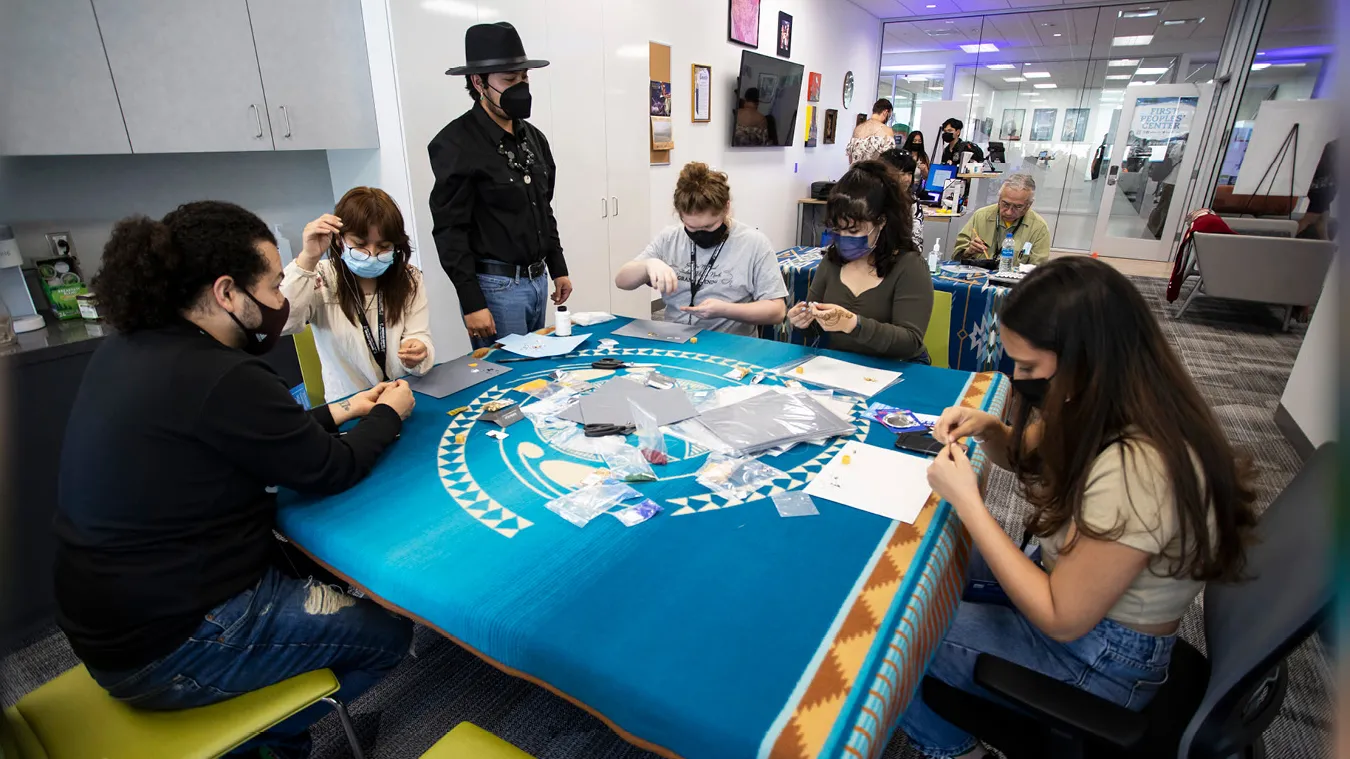Joe Gutierrez | Office of Strategic Communication | (909) 537-3007 | joeg@csusb.edu


In an effort to increase Native American student involvement, Cal State San Bernardino is working to build relationships with Native American clubs, communities and students to create a pipeline for Native students and teachers, while also teaching the university community about indigenous cultures.
Some of the current clubs CSUSB offers are the American Indian Student Organization (AISO), First Peoples’ Center, and its connections through the Palm Desert Campus, said Elder/Culture Bearer in-Residence, Robert Levi Jr.
“Coming onto campus this past February, I saw clubs with their canopies up on Coyote Walk, but I saw none for this club (American Indian Student Organization),” said Levi, a citizen of the Torres Martinez Desert Cahuilla Indians. “There was an American Indian student alliance, but it wasn’t active.”
Following this, Levi got a core of seven students that have helped get the American Indian Student Organization (AISO) active, which has grown to 10 members.
The AISO offers an opportunity for students to come together, share ideas and have a safe space to be themselves.
“Starting AISO was the first step in getting things started,” said student assistant for the First Peoples’ Center, Alex Espinoza, who is part of the Chemehuevi tribe. “With the club now, we’re able to get the word out to other students on campus and in the community.”
Within the community, the AISO is tying into Title VI programs in partnership with the city of San Bernardino. This allows AISO to connect with the community by meeting with Native students from kindergarten through 12th grade to give them an idea of CSUSB and the resources it offers.
One of the resources AISO offers its students on campus is the ability to voice and share opinions. One topic discussed by the organization is the naming of the coyote statue, currently called Wild Song, in front of the Santos Manuel Student Union South. The AISO wants the coyote’s name to be more consistent with local Native tribes.
The First Peoples’ Center offers different opportunities for students, as compared to AISO. The center offers a place to meet, a healing circle for students, health services and a beading circle.
“We have anywhere from 10 to 20 students in here at a time,” said Levi.
Last month, it was announced that CSUSB partnered with California Nations Indian College (CINC) to create a pipeline of Native students to CSUSB. With this program, CINC students will receive a program of studies and support to meet the admission requirements for entrance to CSUSB upon graduation.
The CINC partnership centers around creating more direct access between Coachella Valley residents and CSUSB’s two campuses.
“We’re working together to get a good pipeline in place that’ll help us out in getting more Natives to CSUSB,” said student assistant of the First Peoples’ Center, Daniel Calderon, of the Guachichil Nation.
In addition to this partnership, Levi and AISO are interested in forming more partnerships with other local community colleges.
“Outreach is a major concern,” said Levi. “My job is to not only get students here but keep them here.”
Another focus is to get more Native American history taught at CSUSB.
“In order to get more classes that teach Native history, we get to hire more Native faculty,” said Levi.
To contribute to the goal of hiring more Native faculty, Calderon and Espinoza are currently pursuing careers in teaching.
For those interested in being an ally of AISO or for more information regarding these clubs and partnerships, visit the First Peoples’ Center in the SMSU North building on the third floor in room 3309 or visit their Instagram page @firstpeoplescenter_csusb.
“Come on down. You don’t have to be a Native, we just need those that show an interest in our culture,” said Levi. “We just want to get the word out and share the history of our culture.”